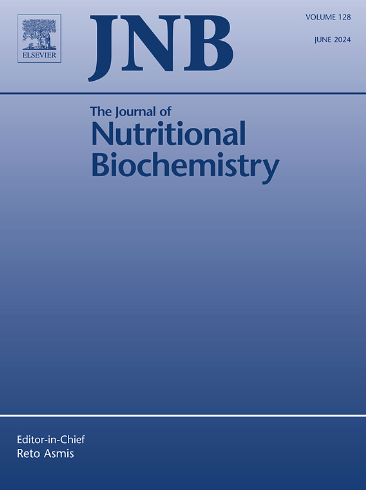麦角硫因在代谢性疾病中的作用和功能。
IF 4.8
2区 医学
Q1 BIOCHEMISTRY & MOLECULAR BIOLOGY
引用次数: 0
摘要
全球代谢性疾病的发病率呈上升趋势,已成为个人健康和生命的重大威胁。麦角硫因(EGT)是一种天然甜菜碱氨基酸,存在于各种食物,尤其是蘑菇中。麦角硫因不能由哺乳动物合成;它被一种阳离子蛋白--新型有机阳离子转运体 1(OCTN1)吸收进入小肠上皮细胞,并被转运到某些器官。据报道,根据其结构,EGT 具有抗氧化、抗炎、抗凋亡、抗衰老和螯合金属的作用。EGT 的独特化学特性和生物功能使其成为研究和治疗代谢性疾病的理想候选物质。本综述概述了 EGT 的能力、对多种代谢性疾病的潜在治疗效果及其具体机制。最后,我们概述了 EGT 未来研究面临的挑战,并希望将其确立为治疗代谢性疾病的前瞻性药物。本文章由计算机程序翻译,如有差异,请以英文原文为准。

The roles and functions of ergothioneine in metabolic diseases
The global prevalence of metabolic diseases is on the increase, and it has become a significant threat to the health and lives of individuals. Ergothioneine (EGT) is a natural betaine amino acid found in various foods, particularly mushrooms. EGT cannot be synthesized by mammals; it is absorbed into small intestinal epithelial cells by a cationic protein, the novel organic cation transporter 1 (OCTN1), and transported to certain organs including liver, spleen, kidney, lung, heart, eyes and brain. EGT has been reported to exhibit antioxidant, anti-inflammatory, anti-apoptotic, anti-aging, and metal-chelating effects. The unique chemical properties and biological functions of EGT position it as a promising candidate for the research and treatment of metabolic diseases. This review summarizes EGT's capacities, potential therapeutic effects on multiple metabolic diseases, and their specific mechanisms. Finally, we outline challenges for future research on EGT and aspire to establish it as a prospective therapeutic agent for metabolic diseases.
求助全文
通过发布文献求助,成功后即可免费获取论文全文。
去求助
来源期刊

Journal of Nutritional Biochemistry
医学-生化与分子生物学
CiteScore
9.50
自引率
3.60%
发文量
237
审稿时长
68 days
期刊介绍:
Devoted to advancements in nutritional sciences, The Journal of Nutritional Biochemistry presents experimental nutrition research as it relates to: biochemistry, molecular biology, toxicology, or physiology.
Rigorous reviews by an international editorial board of distinguished scientists ensure publication of the most current and key research being conducted in nutrition at the cellular, animal and human level. In addition to its monthly features of critical reviews and research articles, The Journal of Nutritional Biochemistry also periodically publishes emerging issues, experimental methods, and other types of articles.
 求助内容:
求助内容: 应助结果提醒方式:
应助结果提醒方式:


